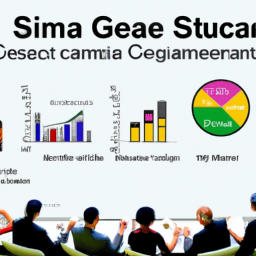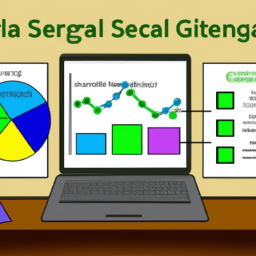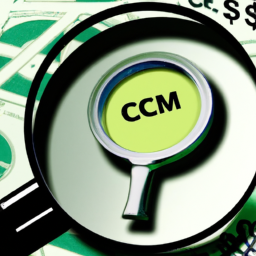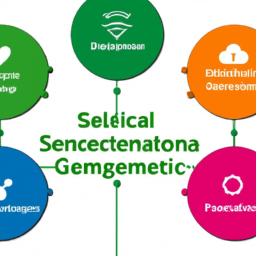Ready to conquer the Six Sigma Green Belt exam? Look no further. With these expert tips, you’ll tackle the exam with confidence.
From mastering key concepts to developing time management strategies, this article has got you covered. Utilize practice exams and leverage study materials to ensure success.
No need to stress, we’ll guide you through building confidence and overcoming exam anxiety. Get ready to ace the Six Sigma Green Belt exam like a pro.
Key Takeaways
- Understanding the exam structure and content is crucial for success in the Six Sigma Green Belt exam.
- Mastering key concepts and tools such as statistical analysis and process improvement is essential.
- Creating an effective study plan with time management strategies and achievable goals is important for preparation.
- Utilizing practice exams, mock tests, and realistic exam simulations helps gauge knowledge, improve skills, and boost confidence.
Understanding the Six Sigma Green Belt Exam
To understand the Six Sigma Green Belt Exam, you should familiarize yourself with its structure and content. The exam structure consists of multiple-choice questions that assess your knowledge and understanding of the Six Sigma methodology, tools, and techniques.
The exam content covers topics such as process improvement, statistical analysis, project management, and problem-solving. It is essential to study these areas thoroughly to ensure success.
The scoring criteria for the exam are based on a predetermined passing score, usually set at 70% or higher. Each question is assigned a specific point value, and your score is calculated based on the number of correct answers. It is important to note that there may be negative marking for incorrect answers, so it is better to leave a question blank if you are unsure of the correct response.
Mastering the Key Concepts and Tools
Understand the key concepts and tools to excel in the Six Sigma Green Belt exam. Mastering statistical analysis and implementing process improvement are crucial skills for success in this exam. To help you grasp these concepts more effectively, here is a table summarizing the key tools and their applications:
| Key Concept | Tools |
|---|---|
| Statistical Analysis | Control Charts, Hypothesis Testing, Regression Analysis |
| Process Improvement | DMAIC Methodology, Root Cause Analysis, Lean Principles |
Statistical analysis involves using tools like control charts, hypothesis testing, and regression analysis to analyze data and make informed decisions. Process improvement, on the other hand, focuses on using the DMAIC methodology, root cause analysis, and lean principles to identify and eliminate defects in a process. By mastering these key concepts and tools, you will be well-equipped to tackle the Six Sigma Green Belt exam with confidence.
Creating an Effective Study Plan
When it comes to creating an effective study plan for the six sigma green belt exam, there are three key points you need to consider: time management strategies, study materials selection, and setting achievable goals.
Managing your time efficiently will allow you to allocate dedicated study periods and avoid last-minute cramming.
Choosing the right study materials that align with the exam content will ensure you are well-prepared and confident in your knowledge.
Time Management Strategies
Effective time management is crucial for success on the six sigma green belt exam, so prioritize your study tasks accordingly. One of the key strategies for effective time management is time tracking. Keep a record of how much time you spend on each study task. This will help you identify areas where you may be spending too much time and areas where you may need to allocate more time.
Additionally, utilizing prioritization techniques can help you make the most efficient use of your time. Prioritize your study tasks based on their importance and urgency. Focus on the topics that carry more weight in the exam and require more attention.
By effectively tracking your time and using prioritization techniques, you can ensure that you allocate enough time to cover all the necessary topics and improve your chances of success on the six sigma green belt exam.
As you move on to the next section about study materials selection, it is important to remember that the right study materials can greatly impact your exam preparation.
Study Materials Selection
Choosing the right study materials for the Six Sigma Green Belt exam can significantly impact your preparation. To ensure you’re equipped with the best resources, consider the following study techniques and online resources:
-
Textbooks: Utilize comprehensive Six Sigma textbooks that cover all the necessary concepts and provide practice questions to reinforce your understanding.
-
Online courses: Enroll in reputable online courses specifically designed for the Six Sigma Green Belt exam. These courses often include video lectures, practice exams, and interactive learning modules.
-
Practice exams and sample questions: Solve practice exams and sample questions to familiarize yourself with the exam format and identify areas that require further study.
Remember, online resources such as e-books, blogs, and forums can also be valuable tools for accessing additional study materials and gaining insights from experts in the field.
Setting Achievable Goals
To set achievable goals for your study plan, start by breaking down the topics into manageable chunks. This will help you stay organized and focused on the specific areas you need to cover.
Begin by identifying the main topics or subjects that will be tested in the exam. Once you have a clear understanding of these topics, you can then set achievable targets for each one. Consider the amount of time you have available for studying and allocate it accordingly to each topic.
Additionally, use goal-setting techniques such as SMART goals (specific, measurable, attainable, relevant, and time-bound) to ensure that your targets are realistic and actionable.
Utilizing Practice Exams and Mock Tests
Are you looking for effective ways to prepare for an upcoming test? In this discussion, we will explore test preparation strategies that can help you excel.
We will also delve into the importance of realistic exam simulations and how they can enhance your performance.
Additionally, we will discuss performance evaluation techniques that can provide valuable insights into your strengths and areas for improvement.
Test Preparation Strategies
One of the most effective ways to prepare for the six sigma green belt exam is by utilizing practice tests. These tests not only help you gauge your knowledge and identify areas for improvement, but they also help alleviate test anxiety by familiarizing you with the exam format and content.
To make the most of practice tests, consider the following strategies:
-
Time yourself: Set a timer to simulate the exam conditions and improve your time management skills.
-
Review incorrect answers: Take the time to understand why you got a question wrong and learn from your mistakes.
-
Create a study plan: Break down your study material into manageable chunks and allocate time for each topic.
By following these effective study techniques, you can boost your confidence and reduce anxiety when taking the six sigma green belt exam.
Now, let’s explore the importance of realistic exam simulations.
Realistic Exam Simulations
Now that you have learned some effective study strategies for your Six Sigma Green Belt exam, it’s time to take your preparation to the next level by incorporating realistic exam simulations into your study routine. These simulations are designed to mimic the actual exam experience, helping you familiarize yourself with the format, time constraints, and types of questions you may encounter.
To help you understand the importance of realistic exam simulations, take a look at the table below:
| Benefits of Realistic Exam Simulations | Description |
|---|---|
| 1. Familiarity | Simulations help you become comfortable with the exam format and structure, reducing anxiety and boosting confidence. |
| 2. Time Management | By practicing with simulated time constraints, you can learn to manage your time effectively during the actual exam. |
| 3. Question Types | Simulations expose you to a variety of question types, allowing you to practice different problem-solving techniques. |
| 4. Identifying Weaknesses | Through simulations, you can identify your areas of weakness and focus on improving them before the exam. |
| 5. Confidence Building | Successful completion of realistic exam simulations builds your confidence, helping you approach the actual exam with a positive mindset. |
Performance Evaluation Techniques
Performance evaluations provide valuable insights into your strengths and areas for improvement. By analyzing performance measurement data, you can gain a deeper understanding of your performance and make informed decisions to enhance your skills.
Here are three effective performance evaluation techniques:
-
Self-Assessment: Reflect on your own performance and identify areas where you excel and areas where you can improve. This self-reflection helps you set goals and develop action plans for growth.
-
360-Degree Feedback: Gather feedback from colleagues, managers, and subordinates to gain a well-rounded perspective on your performance. This feedback can highlight blind spots and provide valuable insights for development.
-
Data Analysis: Utilize data-driven analysis to objectively evaluate your performance. Analyzing metrics such as productivity, quality, and customer satisfaction can help you identify patterns and trends that can guide your improvement efforts.
Developing Time Management Strategies
To succeed in the Six Sigma Green Belt exam, it’s crucial to develop effective time management strategies. Effective study techniques and stress management play a vital role in optimizing your preparation.
First, set specific goals and create a study schedule that allows you to cover all the required topics without feeling overwhelmed. Break down your study sessions into manageable chunks and allocate sufficient time for each topic.
Additionally, utilize techniques such as creating flashcards, summarizing key concepts, and practicing with sample questions to enhance your understanding and retention. It’s important to take breaks and engage in stress-relieving activities to maintain focus and prevent burnout.
By implementing these strategies, you’ll be able to maximize your study time and approach the exam with confidence.
Now, let’s explore how leveraging resources and study materials can further enhance your preparation.
Leveraging Resources and Study Materials
By utilizing various study resources and materials, you can enhance your preparation for the Six Sigma Green Belt exam. Here are some effective study techniques to help you excel in your exam preparation:
-
Review the Six Sigma Body of Knowledge (BoK): Familiarize yourself with the key concepts, tools, and methodologies covered in the BoK. This will provide you with a solid foundation for the exam.
-
Practice with sample questions: Solve practice questions and mock exams to gauge your understanding of the topics and identify areas where you need improvement.
-
Join study groups or forums: Engage with other aspiring Six Sigma professionals to discuss concepts, share study materials, and seek clarification on difficult topics.
By incorporating these study techniques into your exam preparation, you will be well-equipped to tackle the Six Sigma Green Belt exam with confidence.
Now, let’s explore how you can build your confidence and overcome exam anxiety.
Building Confidence and Overcoming Exam Anxiety
Now that you’ve learned about leveraging resources and study materials to prepare for your Six Sigma Green Belt exam, it’s time to focus on building your confidence and managing test anxiety.
Building self-esteem is crucial for success in any exam. Start by acknowledging your strengths and achievements throughout your preparation journey. Remind yourself of your dedication and hard work. Visualize yourself confidently answering exam questions and achieving a high score.
To manage test anxiety, try deep breathing exercises or meditation techniques to calm your mind. Create a study schedule that allows for breaks and relaxation. Prioritize self-care during this time, ensuring you are getting enough sleep, eating well, and exercising regularly.
On exam day, arrive early, bring all necessary materials, and take a few moments to center yourself before beginning the test. Remember that you have done the work and are fully prepared. Trust in your abilities and approach the exam with confidence.
Frequently Asked Questions
What Is the Passing Score for the Six Sigma Green Belt Exam?
The passing score for the Six Sigma Green Belt exam is typically 70% or higher. It is important to note that this passing score may vary depending on the certification body or organization administering the exam.
Additionally, the exam duration for the Six Sigma Green Belt exam can range from three to four hours. It is crucial to manage your time effectively and thoroughly review the exam material to increase your chances of success.
Are There Any Prerequisites Required to Take the Six Sigma Green Belt Exam?
To take the Six Sigma Green Belt exam, there are certain prerequisites and eligibility requirements you need to meet.
These requirements vary depending on the certifying body you choose, but generally, you must have a certain level of work experience and/or education in the field of quality management.
Some certifying bodies may also require you to complete a specific training program before you can sit for the exam.
Make sure to check the requirements of the certifying body you’re interested in for the most accurate information.
How Long Is the Six Sigma Green Belt Exam?
The average duration of the Six Sigma Green Belt exam may vary depending on the exam format. However, it typically takes around three to four hours to complete.
During this time, you will be tested on your knowledge and understanding of the Six Sigma methodology and tools. It is important to be well-prepared and confident in your abilities to successfully tackle the exam and earn your Green Belt certification.
Can the Six Sigma Green Belt Certification Be Renewed?
Yes, the Six Sigma Green Belt certification can be renewed. The renewal process involves meeting certain requirements, such as completing continuing education and demonstrating practical application of Six Sigma methodologies.
The certification has a validity period, typically three years, after which it needs to be renewed to maintain its active status.
Are There Any Specific Resources or Study Materials Recommended for Preparing for the Exam?
To prepare for the Six Sigma Green Belt exam, there are several recommended resources and study materials available. These materials can provide you with the knowledge and guidance necessary for success.
It is important to utilize these resources to ensure a thorough understanding of the exam content. By using the recommended study materials, you can boost your confidence and increase your chances of passing the exam with flying colors.
Conclusion
In conclusion, by following these expert tips, you can tackle the Six Sigma Green Belt exam with confidence.
Remember to master the key concepts and tools, create an effective study plan, utilize practice exams and mock tests, develop time management strategies, and leverage resources and study materials.
By doing so, you can build confidence and overcome exam anxiety. Interestingly, research shows that individuals who utilize practice exams and mock tests score an average of 15% higher on the actual exam.
So, make sure to incorporate these valuable tools into your study routine for optimal success.

















